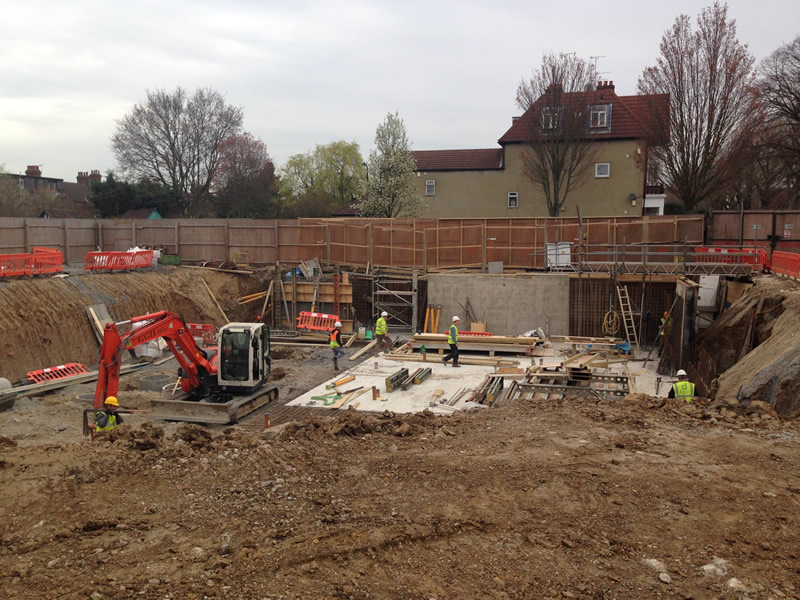Radon gas seeps from the ground due to the decomposition of radioactive minerals. It is the second biggest cause of lung cancer and seeps into homes through cracks in foundations, floor joints, gaps around pipes and service channels, basement drains and a host of other ways. No level of radon is safe, but the more that accumulates the greater the risk.
Although radon levels are low in most of London they are not negligible everywhere. If you’re planning to convert a basement in London it may be advisable to test for radon at the same time. High levels can be made safe by simple and inexpensive building work.
Don’t panic! Just check how severe the risk is in your location, and then consider if it is worth buying a test kit or consulting a specialist basement construction company for advice.
Distribution
In most of London the radon risk is less than 1%. This means that less than 1% of buildings are expected to have sufficient radon for remedial work to be advisable. However, in a crowded conurbation like Greater London 1% translates into many thousands of homes, and in the most affected areas the risk is 10%.
There is more radon on the south bank of the City. From central London the area of higher risk extends eastwards along both the north and south shores of the Thames estuary. Essex to the north of Grays is almost completely clear, but much of Kent has radon and it increases significantly by the time you reach Folkestone.
Further from the river, Shooters Hill, Eltham and Sydenham are safe and most of West London out to the M25. However, south of a line drawn from Erith to Croydon, it is detectable, and in the vicinity of Guildford there are some of the highest levels in south-east England. From there a line of relatively heavy radon extends west to the tip of the South Downs. In Purley, as many as 5% of homes may need tests and remediation.
Protecting your home
Protecting a building from radon penetration can be more complicated than you might think. Something called “the stack effect” sucks the gas into your home due to pressure differences between inside and outside the building. It can be sucked up inside cavity walls and ingress through cable routes, wall vents and loft hatches. Sealing these openings helps, but isn’t enough. Sealing your floors may do more harm than good: a lack of ventilation can cause wood rot or mildew, and that won’t do your lungs much good either.
The best solutions are to install a positive ventilation system or a radon sump.
Positive ventilation involves blowing air down from the roof to force radon out. This method can be combined with heating or air conditioning systems.
A radon sump with a fan, fitted beneath your floor, is the best way to dissipate radon. A pipe runs from an underfloor cavity to the eaves of the house. Sumps can be installed from outside, avoiding damage to existing floors in a converted basement.

